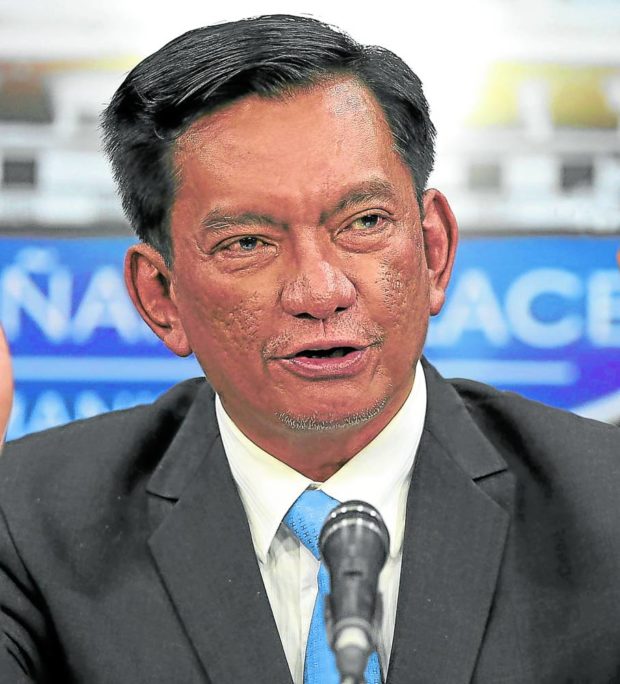
Rep. Joey Salceda. FILE PHOTO
MANILA, Philippines — Passengers affected by the technical issue that barred flights in and out of the country on New Year’s Day should be given the option to get a reimbursement similar to the total value of their airfare, Albay 2nd District Rep. Joey Salceda said on Monday.
Salceda, chair of the House of Representatives Committee on ways and means, said in a statement that the Civil Aviation Authority of the Philippines (CAAP) should classify the technical glitch on Sunday as a “safety reason” to make full reimbursement an option for passengers who had to endure heavy traffic, long queues, and uncertainty of departure on Sunday.
Salceda explained that under the Joint Administrative Order No. 1, series of 2012 of the Department of Transportation and Communications and the Department of Trade and Industry, passengers would have the right to be reimbursed for the total value of their fare if the CAAP certifies that the flight cancellations were caused by “force majeure, safety and/or security reasons.”
“It’s the least that the DOTr and the CAAP can do, at this point […] because this is clearly the fault of the government and not of the airlines, many passengers are unable to avail of basic compensation and accommodation packages such as free hotel rooms,” the lawmaker said.
“The JAO apparently does not have a provision for when it’s clearly the fault of the administrative agencies. So, the least the CAAP can do is certify this event as a safety reason for the cancellation so that the reimbursement mechanism can be set into motion,” he added.
Salceda said at least P660 million would be needed to reimburse 66,000 passengers affected — 56,000 on January 1 and 10,000 on January 2 — if their tickets were worth P10,000 each.
When flights to and from the country were grounded before 10:00 a.m. on Sunday, there were reports that a power outage was responsible for the incident. However, in an online press conference, both Transportation Secretary Jaime Bautista and CAAP Director General (ret.) Capt. Manuel Tamayo confirmed that an electric supply was available.
The flight delays and cancellations were caused by both the commercial and backup uninterruptible power supply (UPS) of the Communications, Navigation and Surveillance Systems for Air Traffic Management (CNS/ATM) malfunctioning.
The CNS/ATM allows planes to communicate their position with each other and to the Air Traffic Management System of the country or the Manila flight information region (FIR). Without this, the CAAP would not be able to direct traffic in the Philippine airspace.
READ: Air traffic system glitch diverts all flights in Manila
According to Tamayo, one of the blowers of the main power supply conked out, leading them to switch to the backup UPS. However, it also malfunctioned when they tried to switch to the standby power supply.
Technicians tried to override the power supply by placing an automatic voltage regulator instead, but they received another error message stating that instead of 220 volts, 380 volts were being supplied to the system. This forced a shutdown of the CNS/ATM, but some components were already damaged.
READ: UPS failure caused glitch at CAAP’s Air Traffic Management Center, says DOTr
Operations normalized at around 8:00 p.m., Tamayo said.
READ: Air traffic system glitch partially resolved, limited flights to resume — MIAA
Salceda believes the issue was not an example of force majeure, as the errors with the UPS can be foreseen.
As such, he said the government should do something to rectify the damages.
“So, I am asking my friend Secretary Bautista to look into how the CAAP can compensate passengers hassled by these delays […] Passengers pay a terminal fee, and airlines pay fees to the CAAP. They failed both sectors, in this case. And there’s a real financial damage to both passengers and airlines as a result of this failure,” Salceda said.
“There is a clear need to update or change policies to reflect what passengers are entitled to when the government is at fault. There’s also a need to see whether the failure could have been avoided had the CAAP complied faithfully with, say, the State Safety Program for air operations,” he added.
The Albay lawmaker also stressed that someone has to be held accountable.
“But beyond these policy changes, we need to hold some people accountable, too – so this never happens again. I mean, I can’t say this is force majeure. You can foresee power outages. You can foresee surges in air traffic. Someone was at fault here,” Salceda noted.

